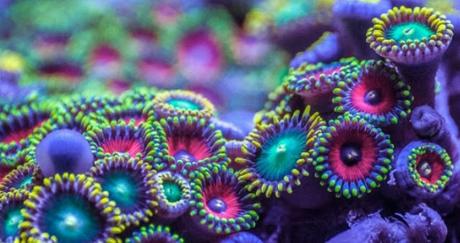What can I add? I know it's the title of a Pulitzer prize winning novel by American author Alice Walker (1983) though I must admit I've not read it; and it's the subject of a very witty poem by Jenny Joseph that has received some additional welcome exposure via the Dead Good Blog page in recent days.
As it happens, purple was the dominant color of my school uniform as well - actually, purple and black striped blazers, caps, scarves and ties; purple and black rugby and hockey jerseys and stockings; pure purple blazers for the prefects; purple and black bruises for poor tortured pupils.
It featured large in our hippy lifestyle of the early '70s. Many a pad or bedsit was painted purple (along with more black and smatterings of red and orange); I must confess to having sported a pair or two of purple velvet loon pants in my time; and somebody once told me that I have a purple aura - but I tend to dismiss that kind of talk.
Enough of the superficial stuff. Let's deep-dive on the subject and discover an amazing purple netherworld...

What you're looking at is a stupendous undersea colony of 'Dragon Eye' Zoanthids, a particularly colourful and allegedly dangerous variety of coral.
Let's get the taxing question of whether they are animal, vegetable or mineral out of the way first. If you were to plump (following good panel show protocol) for 'animal with mineral connections', you'd be pretty much spot on. Zoanthids are animals, simple polyps which can accrete small pieces of sediment (sand, rock) into their beautiful structures as they go about reef-building on bedrock. Consequently they are among the most durable corals as well as being some of the most glorious to look at - akin to an underwater flower-garden.
When it comes to diet, Zoanthids are hybrids and sustain themselves by a combination of photosynthesis and by capturing animal matter: plankton, krill, brine shrimp and bloodworms (yeugh).
As to the danger these beauties pose, some species of Zoanthids contain palytoxin, one of the most toxic organic substances known to man and mermaid. Concentrations of the venom vary by species and experts argue as to the health and safety threat posed to human beings who come into contact with Zoanthids in the sea or in aquaria. Aquarists are advised to wear gloves when handling these corals as most damage is done when the toxins enter the body via broken skin. The majority of Zoanthids would probably only cause localised skin irritations - but given that one gram of the most deadly Zoanthid venom is enough to kill over a hundred grown men if administered intravenously, it is wise to be cautious and to know what you're dealing with!
You'll be happy to hear I've not attempted a poem based on any of the above (though Purple Zoanthus, slayer of bloodworms did hold a momentary appeal and eventually suggested - somewhat obliquely - today's poetic effort).
I've risen to the challenge of finding rhyming words for purple, supposedly difficult to do (though not as tough as rhymes for orange). Some of the rhymes were pre-existing (though archaic); others are newly coined. I offer up the following for your reading pleasure, hoping that it makes some kind of crazy sense:
Rages Miss Marple
Looking homely as a curple
locomoting with a hirple,
she disports in tweedy surple
out among the purple heather
as the most inclement weather
rends the sky.
Saturated to the nurple,
she keeps up a keening churple
fit to summon up a whirlpool
on the spectrum beyond blue
as indigo shades into a violent hue.
The reason why?
Seems the town of Weston Turple
will be twinned with Oudekapelle,
home of Monsieur Poirot, Hercule,
Belgian sleuth of high renown -
so raving Jane must plan his comedown
on the sly.
Thanks as ever. Have a good week, S ;-) Email ThisBlogThis!Share to TwitterShare to Facebook
Reactions:
